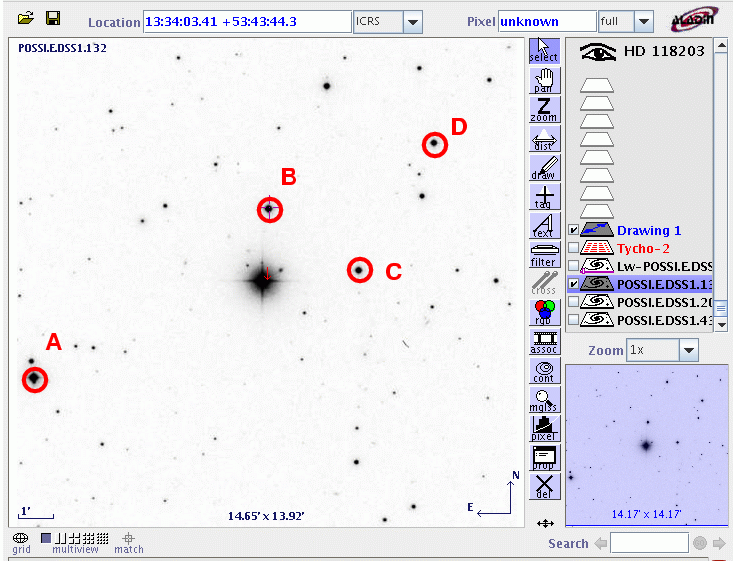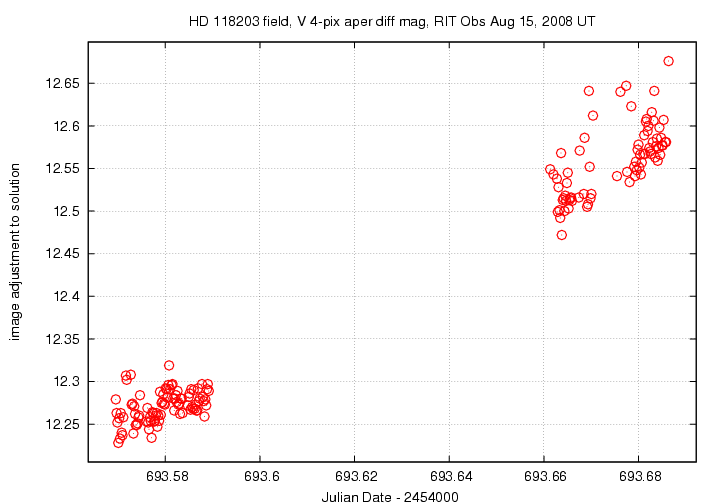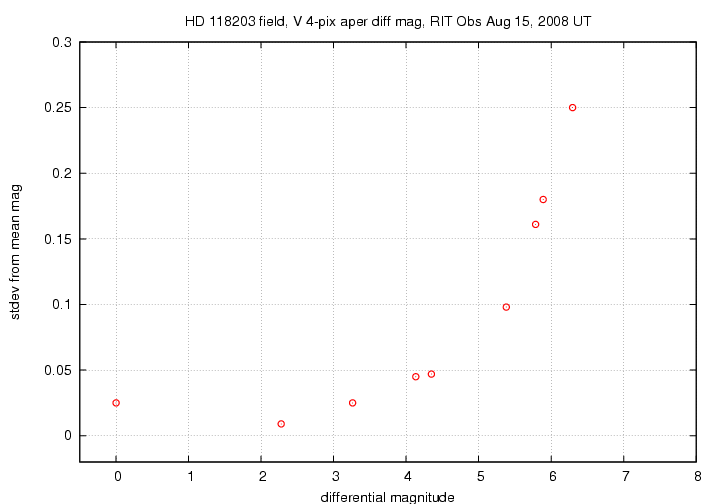
On the night of Aug 14/15, 2008 EDT, a local high school student and I used the RIT Observatory's 12-inch Meade telescope and SBIG ST8 CCD camera to monitor the extrasolar planetary system HD 118203. Astronomers have discovered a planet orbiting this star via the radial velocity technique ... but have not seen any transits. Our goal was to look at the right time and see if we could detect a transit.
For more information about it, read
A student at the local Greece Athena High School, Derek Langdon, is doing an independent study project involving extrasolar planets. He has been studying the literature and looking up good dates for transits we can observe from Rochester. We have already detected one transiting planet, but he wanted to try for something new.
The plan:
Notes from the night
This is a chart of the target's field.

I measured the instrumental magnitude of all stars in the field with aperture photometry, using a radius of 4 pixels = 7.4 arcseconds and sky defined by an annulus around each star. Following the procedures outlined by Kent Honeycutt's article on inhomogeneous ensemble photometry, I used all stars available in each image to define a reference frame, and measured each star against this frame.
Here's an estimate of the zero-point of the instrumental magnitudes as a function of time during my run. If the night is clear, this graph ought to be a horizontal line (or perhaps gently curved due to changes in airmass). I have removed all images which had more than about 0.10 mag of extinction due to clouds ... which is why there's a giant gap in the middle of the run.

Below is a graph of the scatter in differential magnitude versus magnitude in the ensemble solution.

The brightest star in the ensemble is the target HD 118203 itself. The next-brightest star, labelled "A" in the chart above, has a formal scatter of 0.009 mag from one measurement to the next. That's not very good. Note how few comparison stars there are in this sparse field, and how faint most of them are. Even if the conditions had been good, I'm not sure that we would have been able to make measurements with the usual level of precision (around 0.003 mag).
Derek is analyzing the data right now. I'll have an update when he finishes his work.
Last modified 8/15/2008 by MWR.